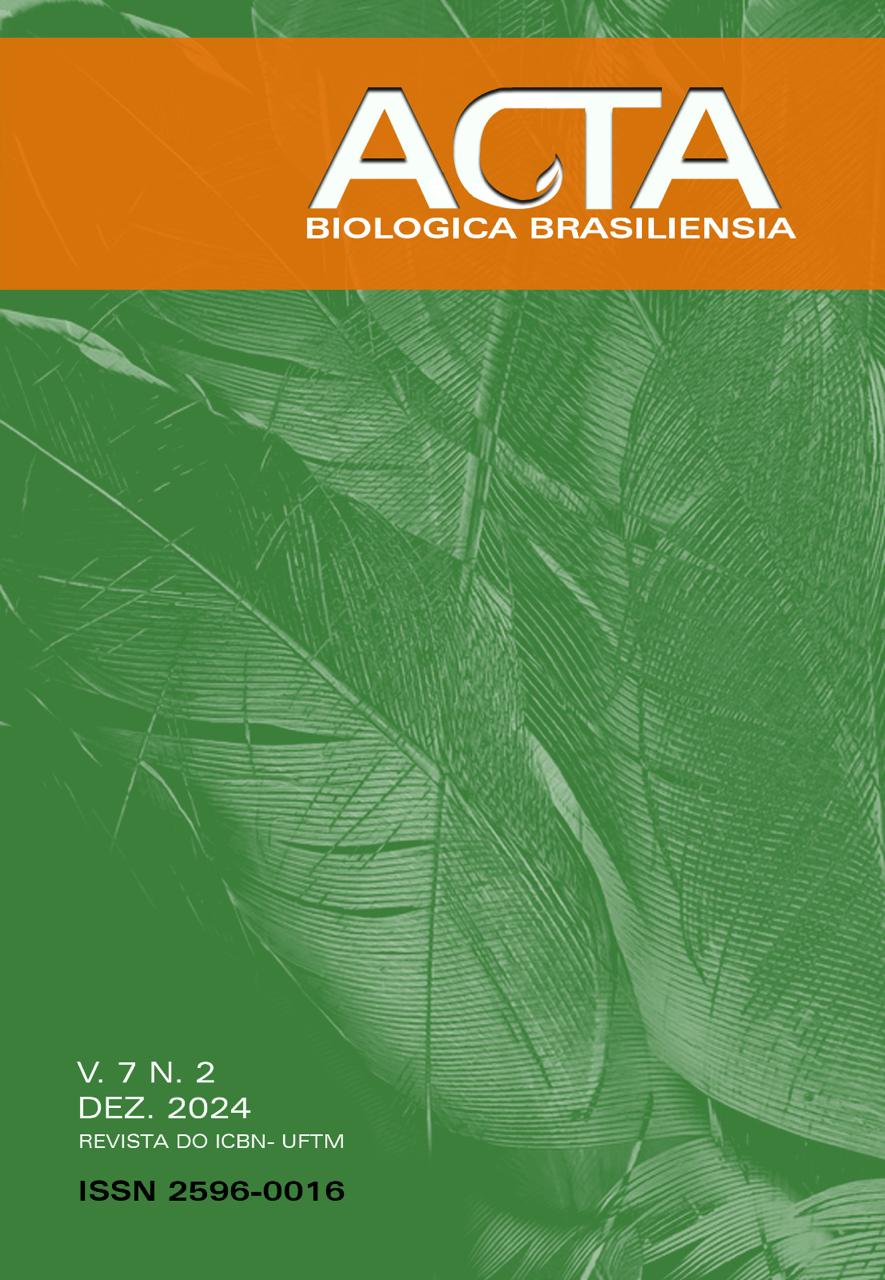COMIDA DE RUA: AVALIANDO SEU IMPACTO NA SAÚDE PÚBLICA, NA ECONOMIA E NA SOCIEDADE À LUZ DOS BENEFÍCIOS NUTRICIONAIS E DOS RISCOS MICROBIANOS – UMA REVISÃO NARRATIVA
DOI:
https://doi.org/10.18554/acbiobras.v7i2.8047Keywords:
Comércio alimentar urbano, manipulação de alimentos, patógenos emergentes em alimentos, impacto socioeconômico, segurança alimentarAbstract
A comida de rua é um fenômeno culinário global, refletindo a diversidade cultural e enriquecendo as experiências turísticas. No entanto, surgem preocupações quanto à sua segurança devido à contaminação microbiana, o que representa riscos significativos para a saúde pública. Esta revisão narrativa avalia a interação entre a comida de rua, a saúde pública, a economia e a sociedade. Explora os riscos microbianos, enfatizando práticas de higiene deficientes entre os vendedores e a infraestrutura inadequada. Apesar dos benefícios nutricionais, o consumo de comida de rua contribui para doenças transmitidas por alimentos, afetando desproporcionalmente populações vulneráveis, especialmente em países de baixa e média renda. Além disso, os vendedores de comida de rua, predominantemente mulheres em nações em desenvolvimento, enfrentam desafios socioeconômicos, apesar de seu papel crucial na economia. A legalização e regulamentação das operações de comida de rua são imperativas para melhorar a segurança alimentar, apoiar meios de subsistência e promover o empoderamento socioeconômico. Em suma, entender e abordar o impacto multifacetado da comida de rua é essencial para promover a saúde pública e o desenvolvimento sustentável.
References
Jeaheng Y, Han H. Thai Street food in the fast-growing global food tourism industry: Preference and behaviors of food tourists. J Hosp Tour Man 2020; 45:641-655. https://doi.org/10.1016/j.jhtm.2020.11.001.
Street Food Around the World: An Encyclopedia of Food and Culture. ABC-CLIO; 2013.
Abrahale K, Sousa S, Albuquerque G, Padrão P, Lunet N. Street food research worldwide: a scoping review. J Hum Nutr Diet 2019; 32(2): 152-174. https://doi.org/10.1111/jhn.12604.
Imathiu S. Street Vended Foods: Potential for Improving Food and Nutrition Security or A Risk Factor for Food borne Diseases in Developing Countries. Curr. res. nutr 2017; 5(2): 55-65. https://dx.doi.org/10.12944/CRNFSJ.5.2.02.
Hassanain NA, Hassanain MA, Ahmed WM, Shaapan, RM, Barakat AM, El-Fadaly HA. Public health importance of foodborne pathogens. World J Exp Med. 2013; 9 (4):208-222. https://doi.org/10.5829/idosi.wjms.2013.9.4.8177.
Bintsis T. Foodborne pathogens. AIMS Microbiol 2017; 29(3): 529-563. https://doi.org/10.3934/microbiol.2017.3.529.
Grace D. Burden of foodborne disease in low-income and middle-income countries and opportunities for scaling food safety interventions. Food Security 2013; 15:1475–1488. https://doi.org/10.1007/s12571-023-01391-3.
Pires SM, Desta BN, Mughini-Gras L, Mmbaga BT, Fayemi OE, Salvador EM, Gobena T, Majowicz SE, Hald T, Hoejskov PS, Minato Y, Devleesschauwer B. Burden of foodborne diseases: think global, act local. Curr Opin Food Sci 2021; 39:152-159. https://doi.org/10.1016/j.cofs.2021.01.006.
Nunes PIG, Custódio MP, Vidal LMT, Brito ECO, Pinto FAC, Costa MTP, Moreira LIM. Uma breve caracterização dos surtos de doenças transmitidas por alimentos no estado do Ceará no período de 2014 a 2016. RICSB 2018; 2 (2):1-11.http://dx.doi.org/10.31512/ricsb.v2i2.2797.
Bereda TW, Emerie YM, Reta AM, Asfaw HS. Microbiological Safety of Street Vended Foods in Jigjiga City, Eastern Ethiopia. Ethiop. J. Health Sci. 2016; 26(2):161-170. https://doi.org/10.4314/ejhs.v26i2.10.
Andrade AA, Paiva AD, Machado ABF. Microbiology of street food: understanding risks to improve safety. J Appl Microbiol. 2023;134(8): lxad167. https://doi.org/10.1093/jambio/lxad167.
Hernández-Cortez C, Palma-Martínez I, Gonzalez-Avila LU, Guerrero-Mandujano A, Solís RC, Castro-Escarpulli G. Food Poisoning Caused by Bacteria (Food Toxins) [Internet]. Poisoning - From Specific Toxic Agents to Novel Rapid and Simplified Techniques for Analysis. InTech; 2017. http://dx.doi.org/10.5772/intechopen.69953.
Mehboob A, Abbas T. Evaluation of Microbial Quality of Street Food in Karachi City, Pakistan: An Epidemiological Study. Microbiol. Res 2019;10(1):7463. https://doi.org/10.4081/mr.2019.7463.
USDA (United States Department of Agriculture). What is the difference between foodborne illness and food poisoning? 2023.
Gibson KE, D'Souza DH, Hall AJ. Foodborne Viral Pathogens. Food Microbiology: Fundamentals and frontiers 2019. https://doi.org/10.1128/9781555819972.ch23.
O’Shea H, Blacklaws BA, Collins PJ, McKillen J, Fitzgerald R. Viruses associated with foodborne infections. Ref Mod Lif Sci 2019; B978-0-12-8096338.902735. https://doi.org/10.1016/B978-0-12-809633-8.90273-5.
Gallo LA, Gallo TF, Young SL, Moritz KM, Akison LK. The Impact of Isolation Measures Due to COVID-19 on Energy Intake and Physical Activity Levels in Australian University Students. Nutrients 2020;12(6):1865. https://doi.org/10.3390/nu12061865.
Nakao JH, Talkington D, Bopp CA, Besser J, Sanchez ML, Guarisco J, Davidson SL, Warner C, McIntyre MG, Group JP, Comstock N, Xavier K, Pinsent TS, Brown J, Douglas JM, Gomez GA, Garrett NM, Carleton HA, Tolar B, Wise ME. Unusually high illness severity and short incubation periods in two foodborne outbreaks of Salmonella Heidelberg infections with potential coincident Staphylococcus aureus intoxication. Epidemiol Infect 2018; 146(1):19-27. https://doi.org/10.1017/S0950268817002655.
Vasickova P, Pavlik I, Verani M, Carducci A. Issues Concerning Survival of Viruses on Surfaces. Food Environ Virol 2010; 2:24–34. https://doi.org/10.1007/s12560-010-9025-6
Todd E. Food-Borne Disease Prevention and Risk Assessment. Int J Environ Res Public Health 2020. 16;17(14):5129. https://doi.org/10.3390/ijerph17145129.
Salamandane A, Malfeito-Ferreira M, Brito L. The Socioeconomic Factors of Street Food Vending in Developing Countries and Its Implications for Public Health: A Systematic Review. Food 2023;12(20):3774. https://doi.org/10.3390/foods12203774.
Rane S. Street Vended Food in Developing World: Hazard Analyses. Indian Journal of Microbiology 2011;51(1):100–106. https://doi.org/10.1007/s12088-011-0154-x.
Noor R. Microbiological quality of commonly consumed street foods in Bangladesh. Nutrition & Food Science 2016; 46(1);130–141. https://doi.org/10.1108/NFS-08-2015-0091.
Souza GC de, Santos CTB dos, Andrade AA, Alves L. Comida de rua: avaliação das condições higiênico-sanitárias de manipuladores de alimentos. Ciência & saúde coletiva 2015;20(8):2329–38. https://doi.org/10.1590/1413-81232015208.14922014.
Madueke SN, Awe S, Jonah AI. Microbiological analysis of street foods along lokoja- abuja express way, Lokoja. Am. J. Res. Commun. 2014;2(1):196-211.
Taniwaki MH, Pitt JI, Copetti MV, Teixeira AA, Iamanaka BT. Understanding Mycotoxin Contamination Across the Food Chain in Brazil: Challenges and Opportunities. Toxins (Basel) 2019;11(7):411. https://doi.org/10.3390/toxins11070411.
World Health Organization (WHO). Food Safety 2019.
Jaffee S, Henson S, Unnevehr L, Grace D, Cassou E. The Safe Food Imperative: Accelerating Progress in Low- and Middle-Income Countries. Agriculture and Food Series; Washington, DC; World Bank; 2018. https://doi.org/10.1596/978-1-4648-1345-0.
Shenoy B, Andani A, Kolhapure S, Agrawal A, Mazumdar J. Endemicity change of hepatitis A infection necessitates vaccination in food handlers: An Indian perspective. Hum Vaccin Immunother 2022; 18(1):1868820. https://doi.org/10.1080/21645515.2020.1868820.
Malhotra S. Food safety issues related to street vendors. In Food. Safety in the 21st Century, Academic Press; 2017. https://doi.org/10.1016/B978-0-12-801773-9.00031-5.
Bouafou KGM, Beugré GFC, Amani YC. Street Food around the World: A Review of the Literature. Jour Ser Sci Man 2012; 14:557-575. https://doi.org/10.4236/jssm.2021.146035.





